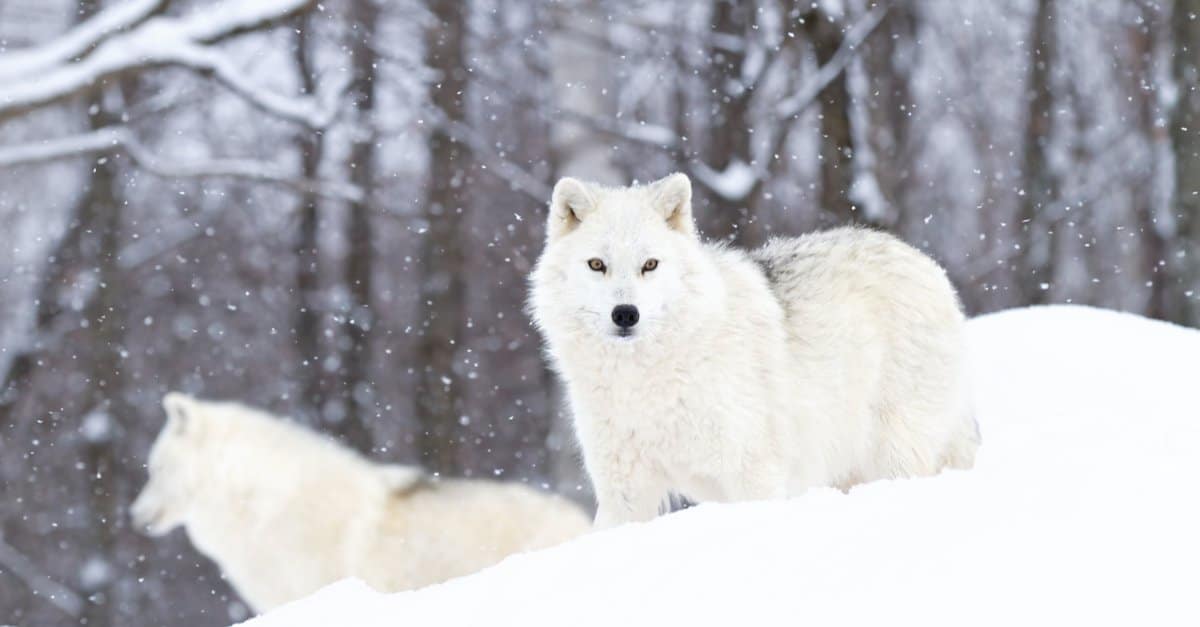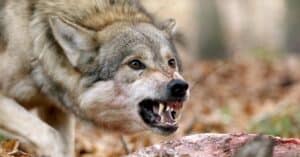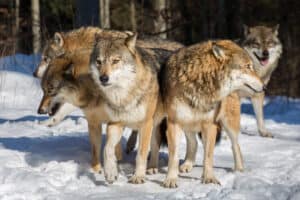Also known as the polar or white wolf, the Arctic wolf (Canis lupus arctos) is a subspecies of the gray wolf. Arctic wolves are found in the Arctic tundra of Canada’s Queen Elizabeth Islands, Alaska, Iceland, and Greenland. They spend their entire lives north of the northern treeline.
Arctic wolves survive in icy areas with average temperatures of minus 30 degrees Celsius. They have adaptations like distinct layers of fur, snouts, shorter legs, and smaller ears to keep them warmer and insulated from the extreme cold. They can survive for 4 to 5 months without eating, but eventually, they must have nourishment to survive the harsh climate.
Arctic wolves feed primarily on a diet consisting of Arctic hares and muskoxen. They sometimes prey on Arctic foxes, beetles, lemmings, birds, and caribou. In turn, Arctic wolves are vulnerable to predation by polar bears. Bears or other wolves can kill a young Arctic wolf cub that wanders alone out of the cave. Humans who venture out into the Arctic wolves’ habitat also pose a threat to them.
The current population of Arctic wolves is still significant, which means they are of least concern, but do they face any threat whatsoever? Let’s find out!
Below are ten incredible Arctic wolf facts you should know.
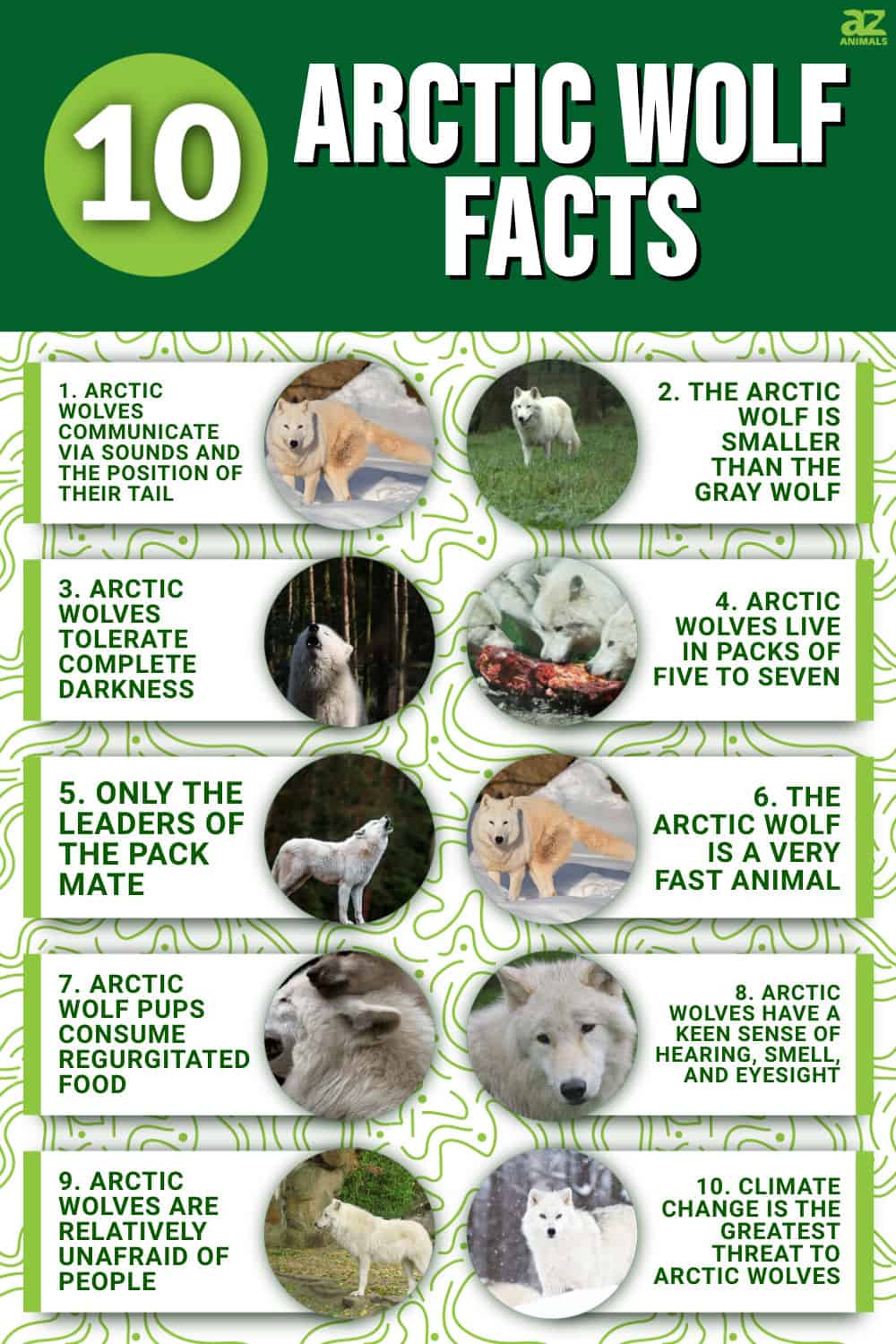
1. Arctic Wolves Communicate via Sounds and the Position of Their Tail

Arctic wolves’ vocalizations include howling, growling, whimpering, and barking.
©Tikhomirov Sergey/Shutterstock.com
Arctic wolves’ vocalizations include howling, growling, whimpering, and barking. These sounds can be a combination of growl-bark or howl-bark. They call each other any time of the day, though they are mostly heard in the evening. So when you hear an Arctic wolf howling at night, know that they are not howling at the moon but are only trying to communicate with each other.
Barking is used as a warning to show aggression when defending a pack or territory. A mother Arctic wolf may bark at her pups when she senses some danger. Growling is also used as a sign of warning. An Arctic wolf growls at intruders to indicate dominance.
Arctic wolves can differentiate between a defensive and a social howl. When another strong Arctic wolf tries to dominate, whimpering indicates submissiveness. Females also whimper when nursing their pups. Howling is intended for long-distance communication.
A defensive howl is used to keep the packs together and keep intruders away. It helps Arctic wolves to stand their ground and protect the young ones who are not yet in a position to run away from danger. A social howl aims to locate one another and possibly have fun.
Wolves frequently use facial expressions and ear and tail positioning to communicate. A tail tucked behind the hind legs and ears flattened backward communicates submission. Straight tails and ears that are perked up or facing forward indicate dominance. Bare teeth, a wrinkled snout, and ears sticking straight up or low and out to the side communicate a threatening message.
2. The Arctic Wolf is Smaller Than the Gray Wolf

Arctic wolves range between 24-36 inches in length and weigh around 70-125 pounds.
©Jean-michel DEMIMIEUX / Creative Commons – Original / License
Technically, Arctic wolves are smaller than gray wolves. They range between 24-36 inches in length and weigh around 70-125 pounds. Gray wolves are 54-72 inches long and weigh between 50 and 145 pounds. Arctic wolves also have smaller ears and shorter muzzles than gray wolves.
3. Arctic Wolves Tolerate Complete Darkness
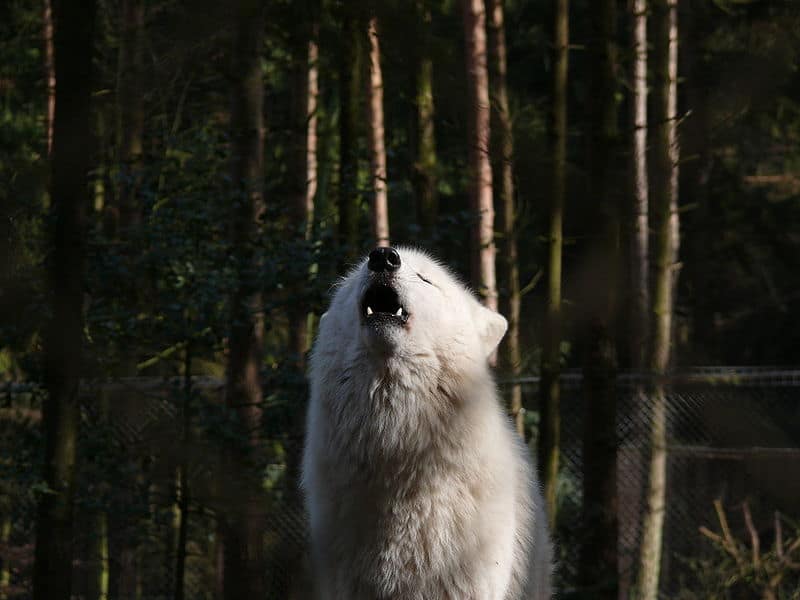
Arctic wolves can endure five months of wintry darkness in a year.
©Gunnar Ries, CC BY-SA 2.5, via Wikimedia Commons – Original / License
Besides low temperatures, Arctic wolves can survive in extreme darkness. They can endure five months of wintry darkness in a year. They hunt under the light of the moon and stars, using their sensitive noses to locate prey miles away.
4. Arctic Wolves Live in Packs of Five to Seven
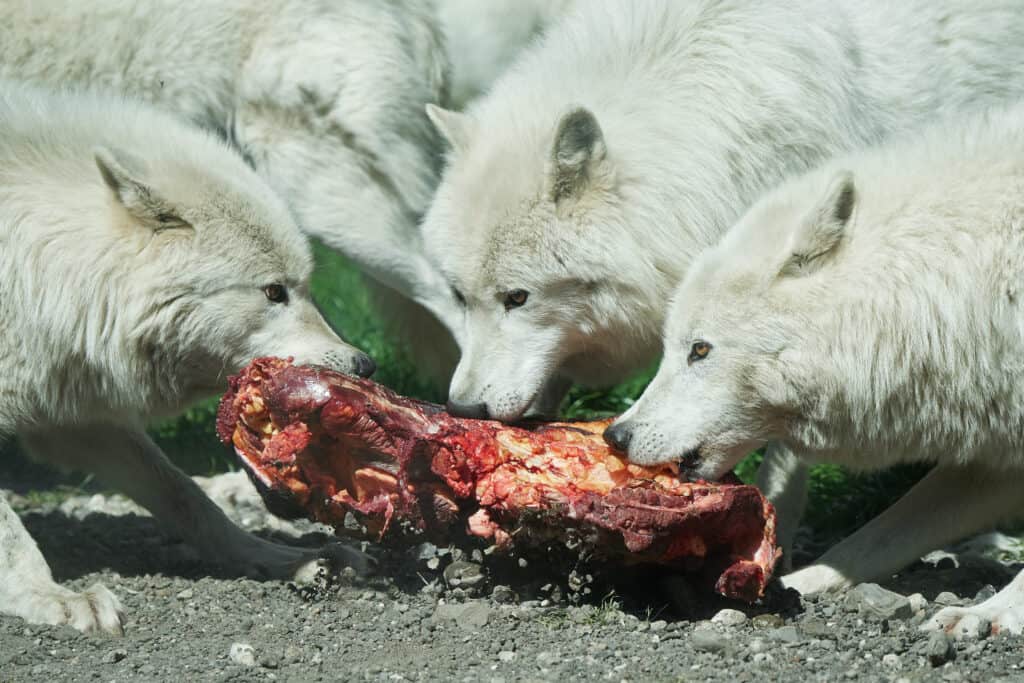
Every member has their place in the dominant hierarchy. Duties are delegated to each member through body posture communication.
©Dennis Jacobsen/Shutterstock.com
Arctic wolves are very social animals and live in packs of 5 to 7, or even up to 20. These wolves hardly live alone. The packs use urine and scent to mark the borders of their territories.
There is a complex order within the pack. Every member has their place in the dominant hierarchy. Duties are delegated to each member through body posture communication. Usually, males are the leaders of the pack.
5. Only the Leaders of the Pack Mate
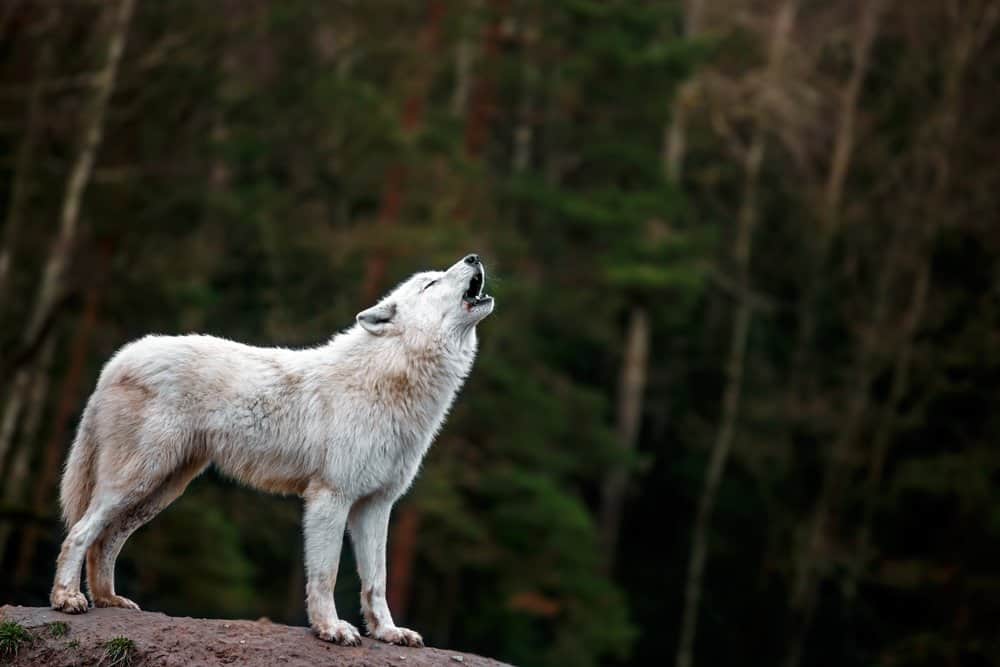
The male pack leaders mate with the dominant female.
©Josef_Svoboda/Shutterstock.com
The male pack leaders mate with the dominant female and are monogamous. The breeding season occurs around March to April, and females give birth to 2 to 3 pups in spring. All pack members share the responsibilities of looking after the young ones. Pups spend the first few months hidden in a cave since they are born deaf, blind, and helpless. Eyes open in about ten days.
Pups are ready to join the pack at the age of 3 months. They do so in the company of their mothers. Fathers help to raise the pups by teaching them to play and hunt. Pups are strong enough in six months when they have already learned some of the survival skills. Females become reproductively mature in two years and males at one year of age.
6. The Arctic Wolf is a Very Fast Animal

The fastest recorded speed of an Arctic wolf is 46 miles per hour.
©Tikhomirov Sergey/Shutterstock.com
Arctic wolves run very fast. They can reach up to a speed of 40 miles per hour when pursuing prey. The fastest recorded speed of an Arctic wolf is 46 miles per hour. However, they are not morphologically adapted for high-speed running.
7. Arctic Wolf Pups Consume Regurgitated Food
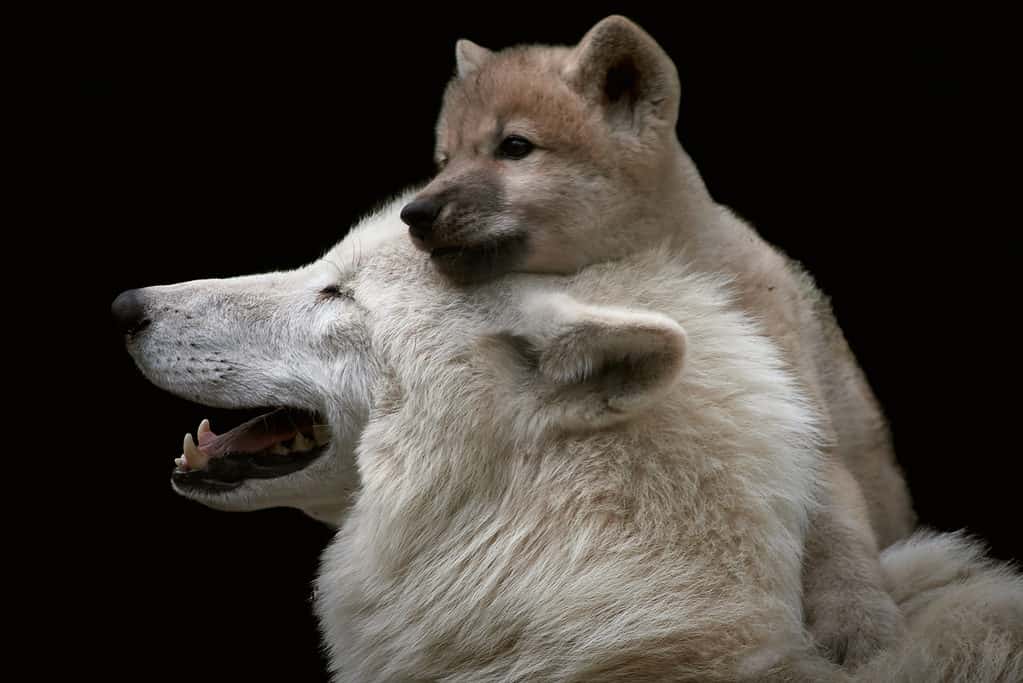
Pups are weaned in two months but until they are able to hunt, they will consume partially digested food.
©Thomas Marx/Shutterstock.com
Until they can hunt, pups consume partially digested food that’s regurgitated by the parents or other members of the pack. The regurgitated food is soft for the young puppies to eat. They follow adults, pawing and whining while licking at their mouths. This stimulates the adults to throw up food in their stomachs. Pups are weaned in two months.
8. Arctic Wolves Have a Keen Sense of Hearing, Smell, and Eyesight
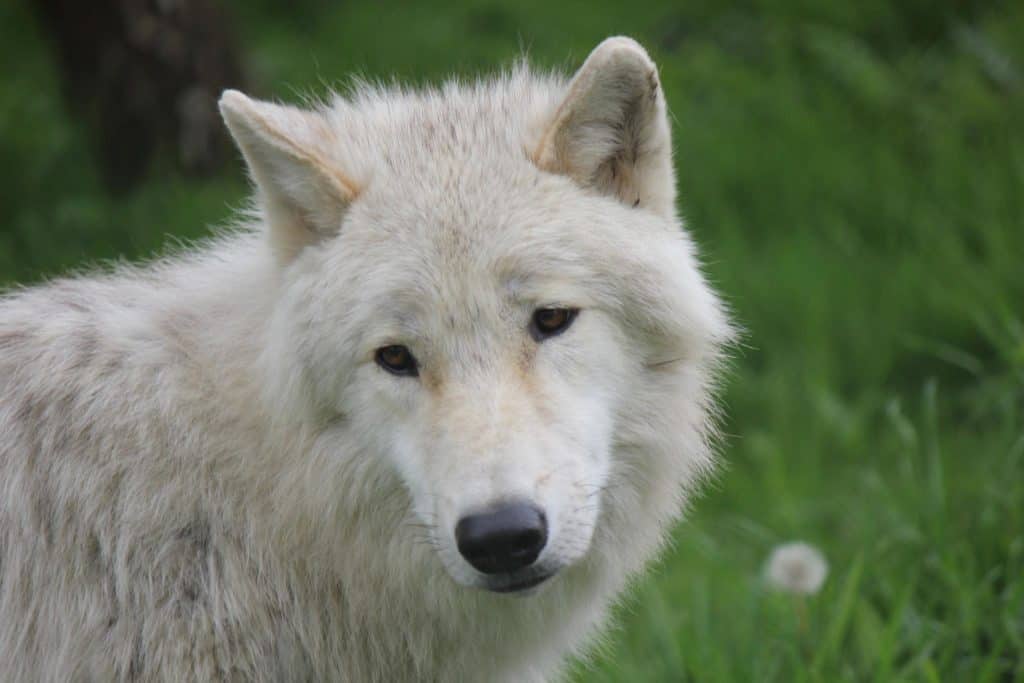
Arctic wolves can hear sounds up to a frequency of 25kHz, with a maximum of 80kHz.
Arctic wolves use their keen sense of hearing, which is generally coordinated with sight and smell, to monitor their environment and identify potential prey. Their triangular-shaped ears rotate independently to hear sounds from as far as 6 to 10 miles away, depending on the wind and terrain.
According to some researchers, Arctic wolves can hear sounds up to a frequency of 25kHz, with a maximum of 80kHz. And yet, these wolves start out wholly deaf and blind in their first 10 to 14 days. They only moan, whine, and squeal to communicate distress or pleasure.
9. Arctic Wolves are Relatively Unafraid of People
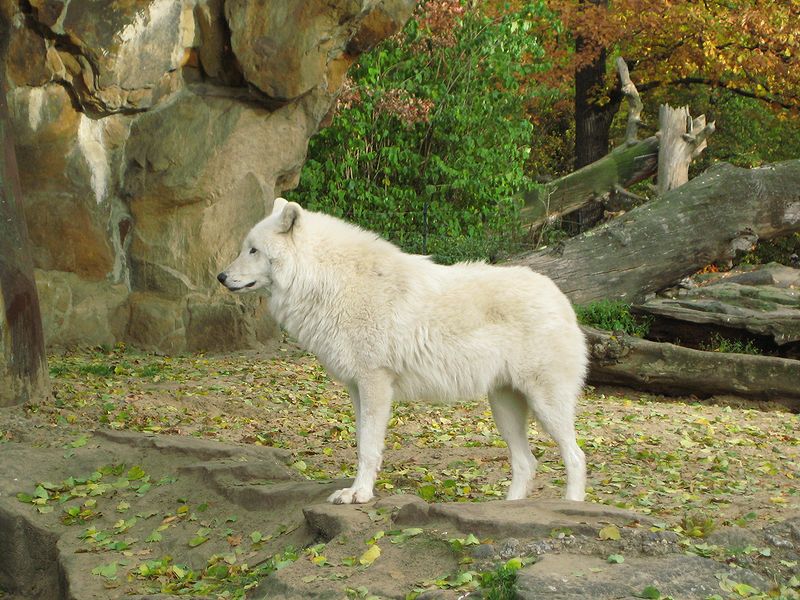
Arctic wolves are not dangerous unless they feel threatened.
©Aconcagua, CC BY-SA 3.0, via Wikimedia Commons – Original / License
Arctic wolves do not fear humans because they rarely see them in their habitats. They are even coaxed to approach people in some areas, which they do so curiously and cautiously. These wolves are not dangerous unless they feel threatened.
10. Climate Change is the Greatest Threat to Arctic Wolves
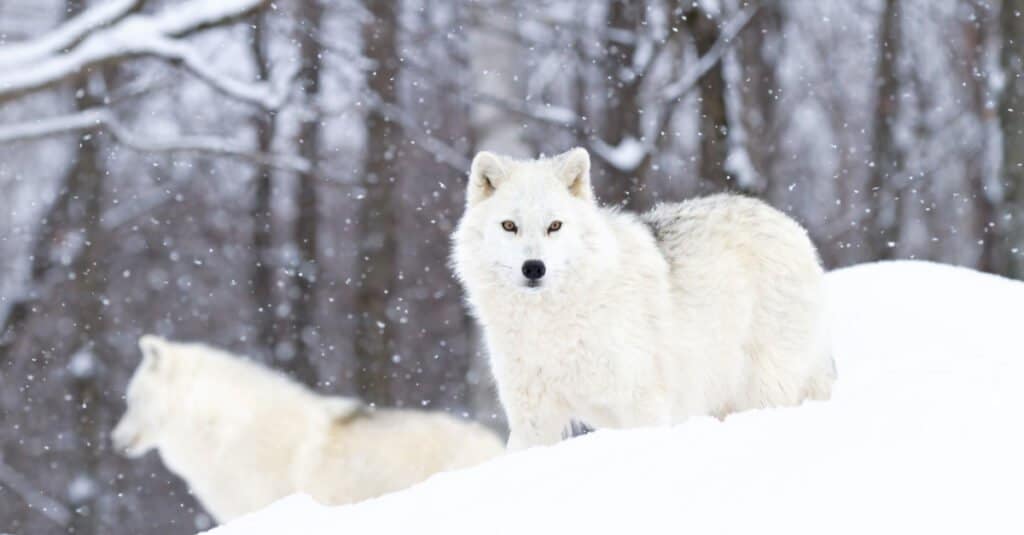
Arctic wolves do not face the threat of hunting or persecution since they rarely come into contact with humans in the Arctic tundra.
©Jim Cumming/Shutterstock.com
Arctic wolves do not face the threat of hunting or persecution since they rarely come into contact with humans in the Arctic tundra. However, climate change is their greatest threat. The extreme weather variations in recent years have made it hard for Arctic hares and muskox to find food, leading to their population decline. As a result, this has interrupted the primary food supply of the Arctic wolf.
Industrial development also poses a threat to the Arctic wolf population. The constant increase of pipelines, roads, and mines encroaches on the Arctic wolf’s territory, interrupting its food supply.
Thank you for reading! Have some feedback for us? Contact the AZ Animals editorial team.

